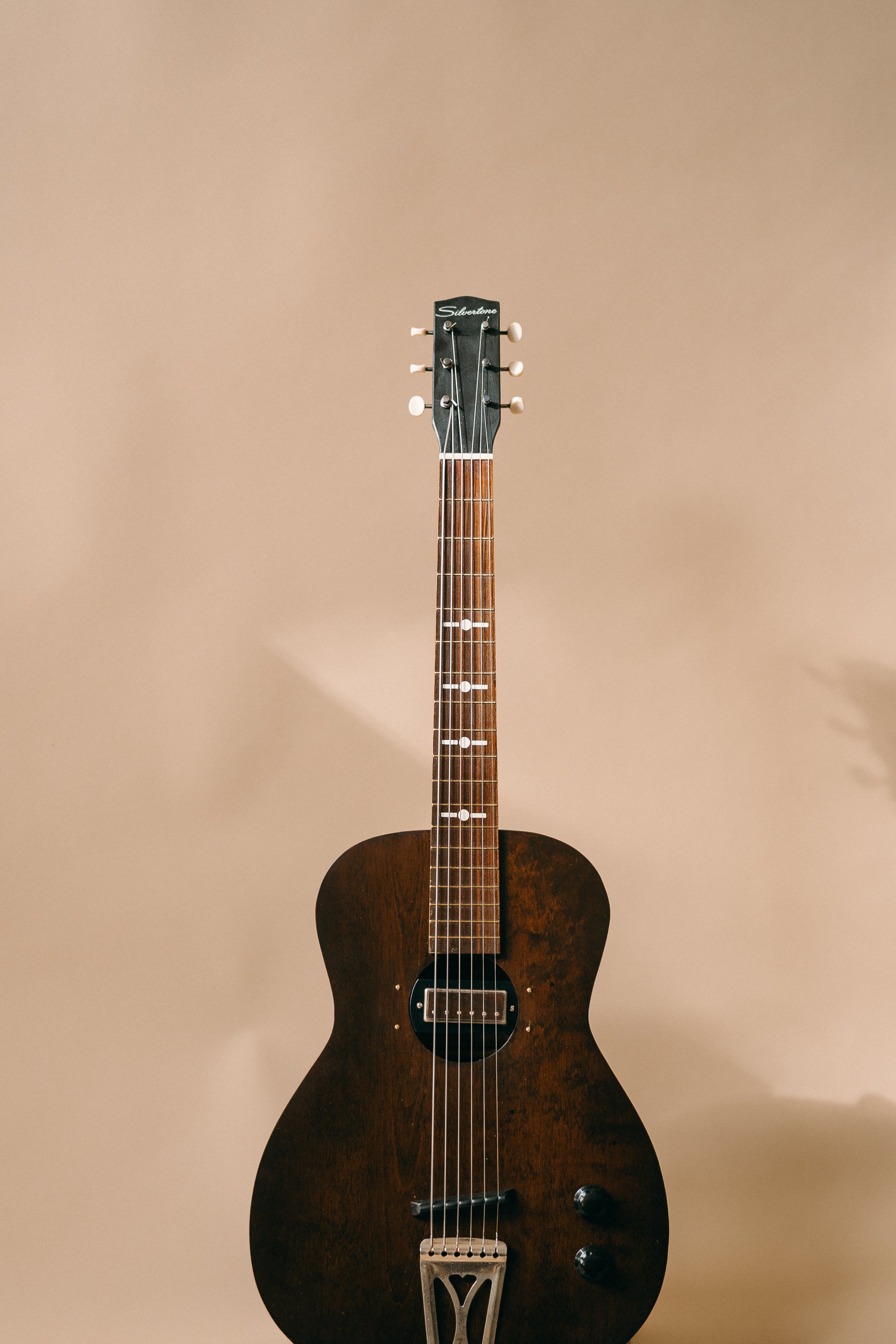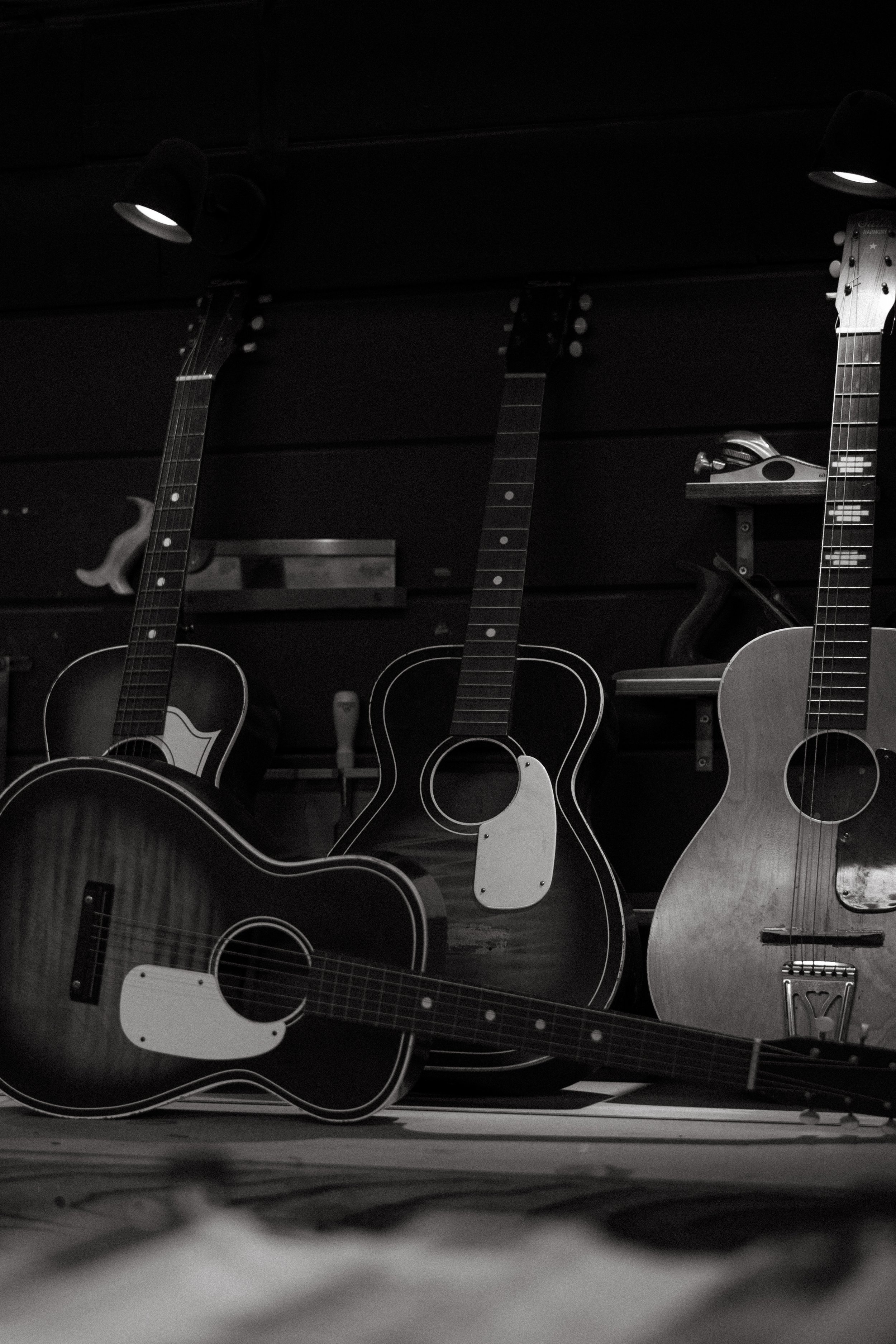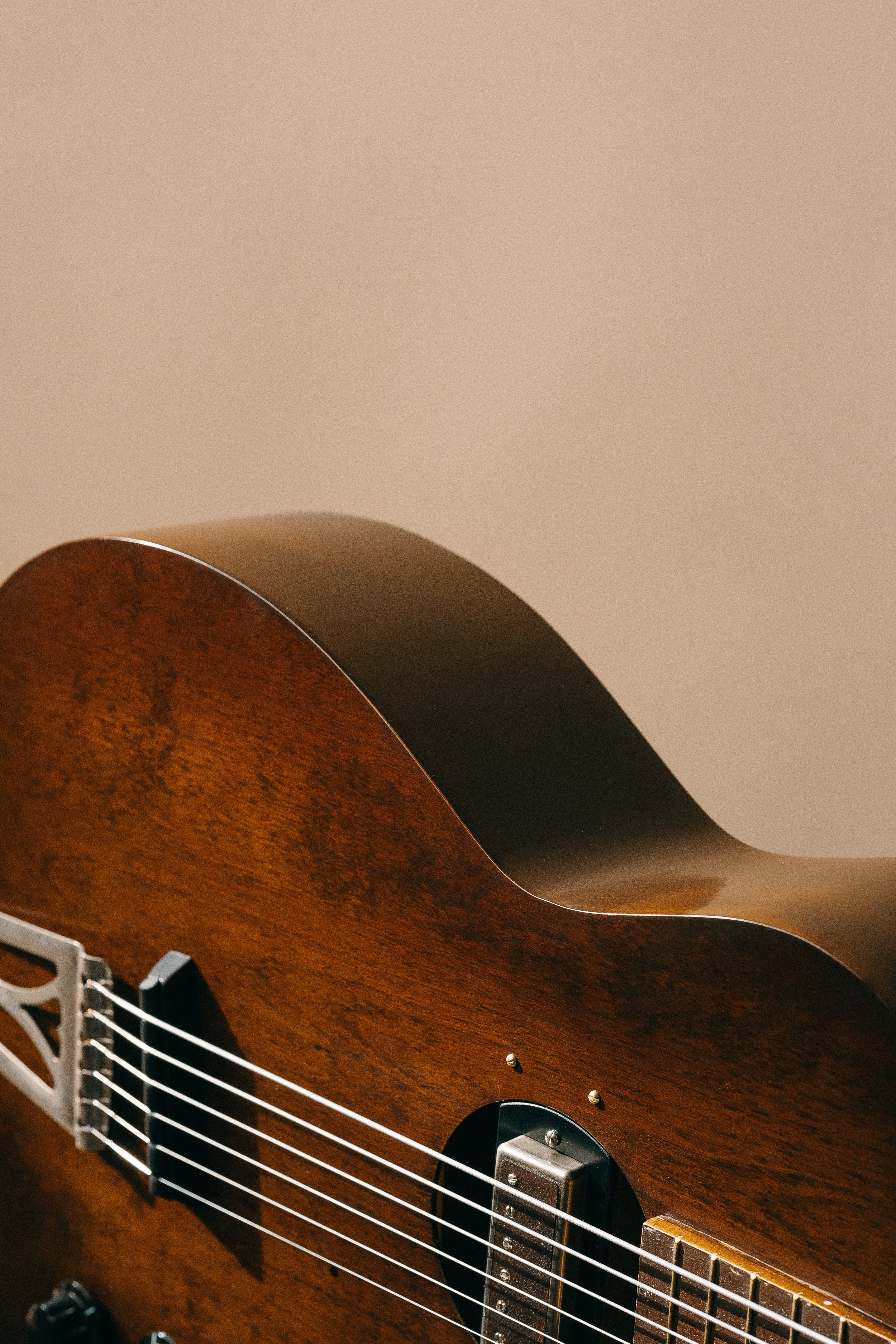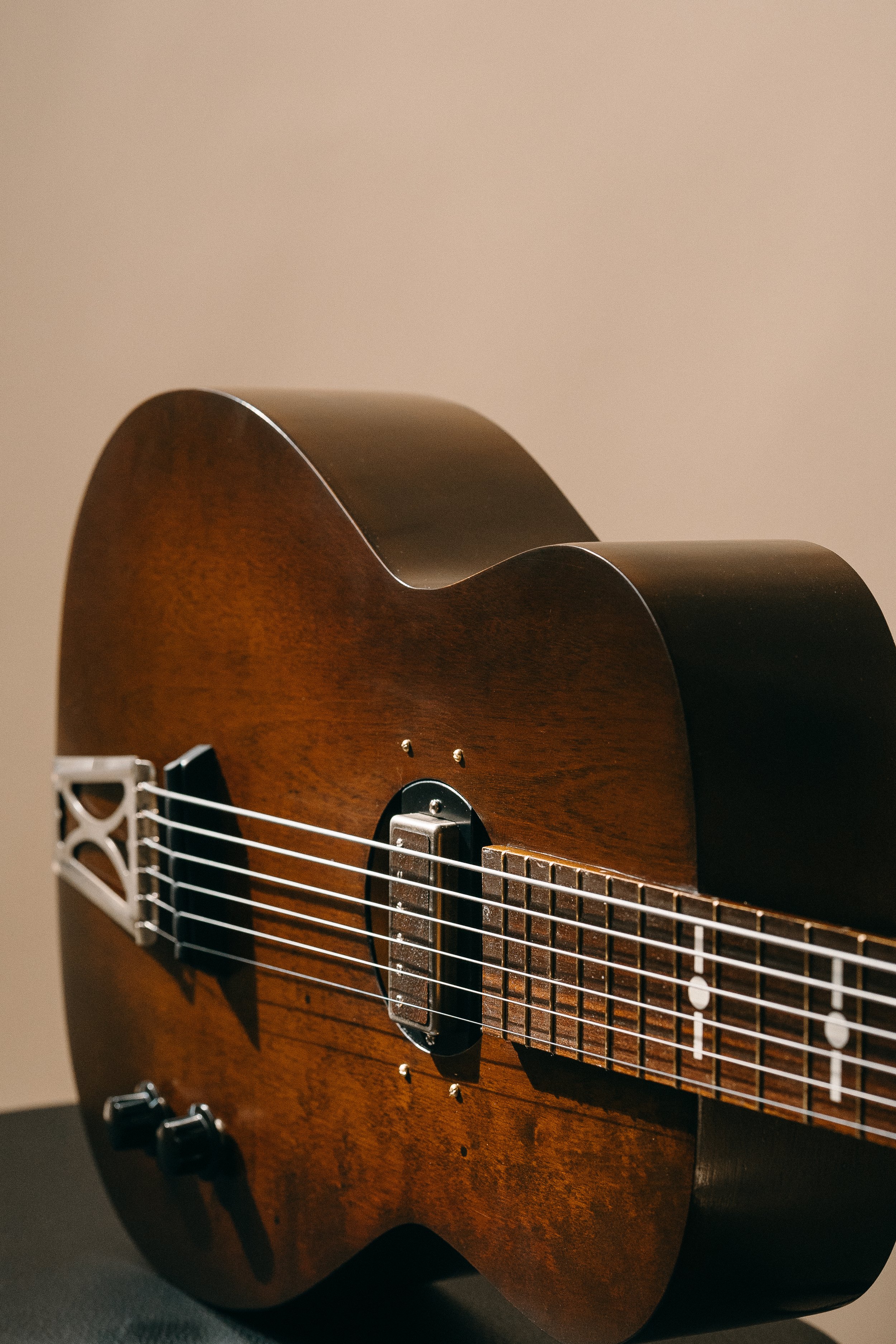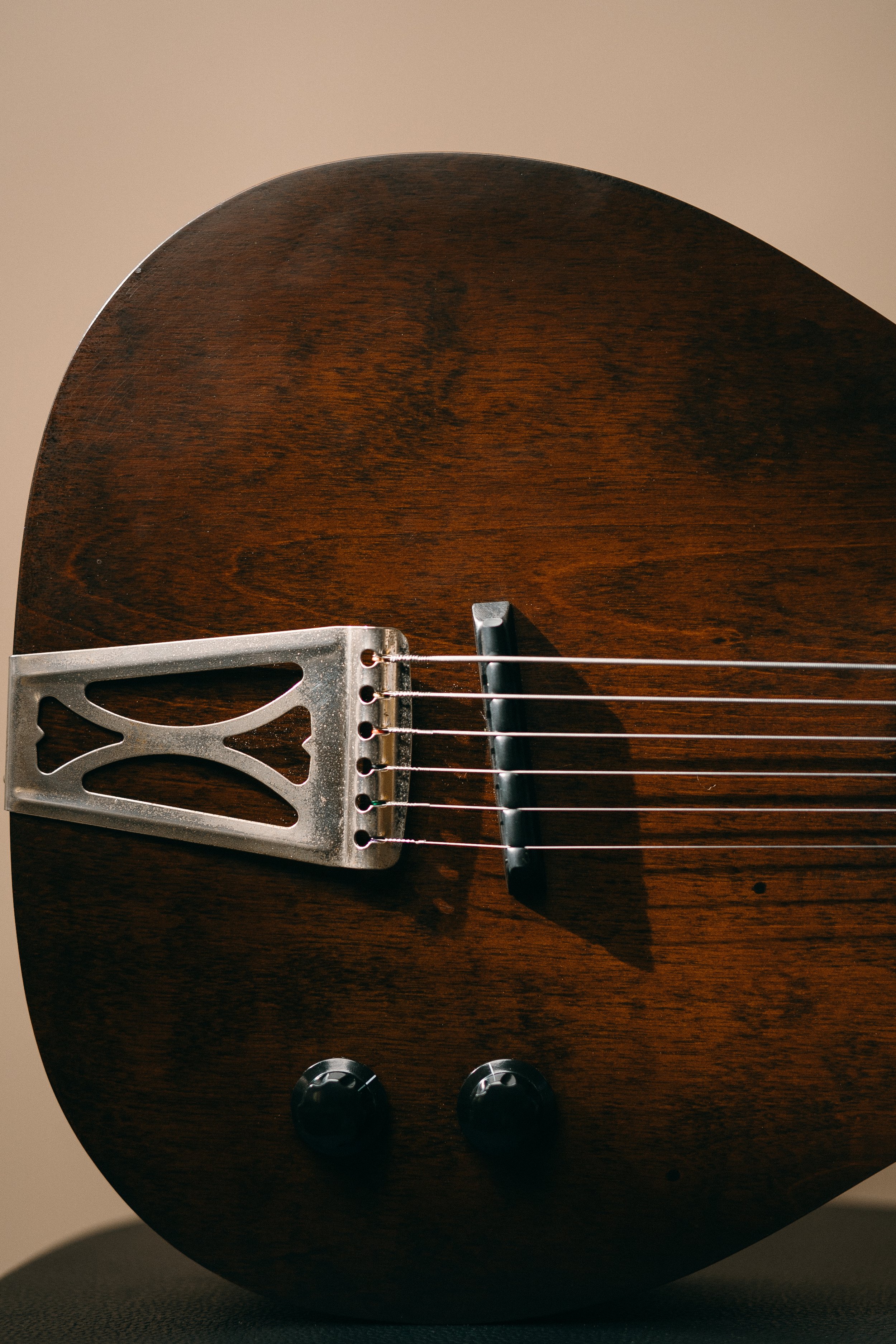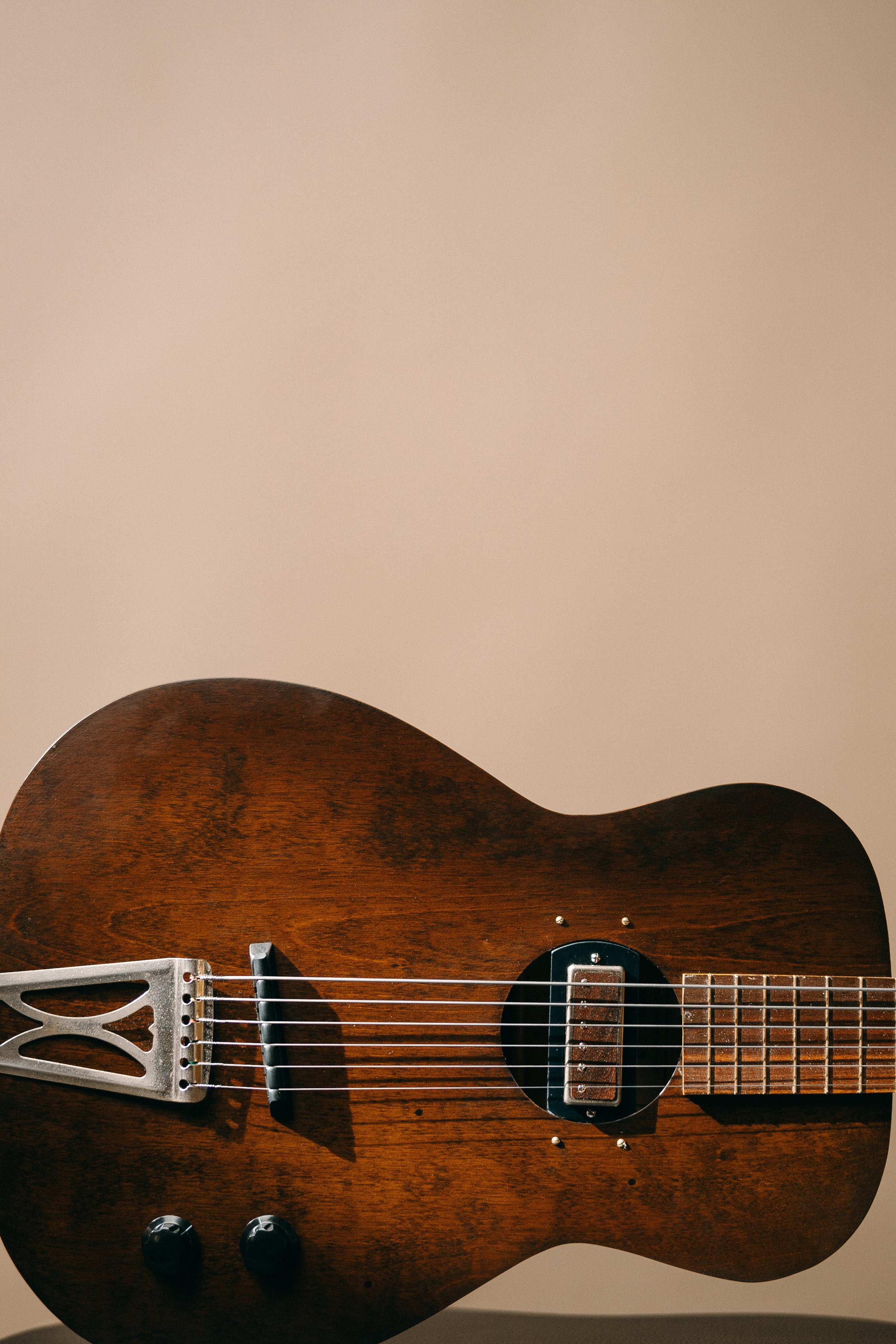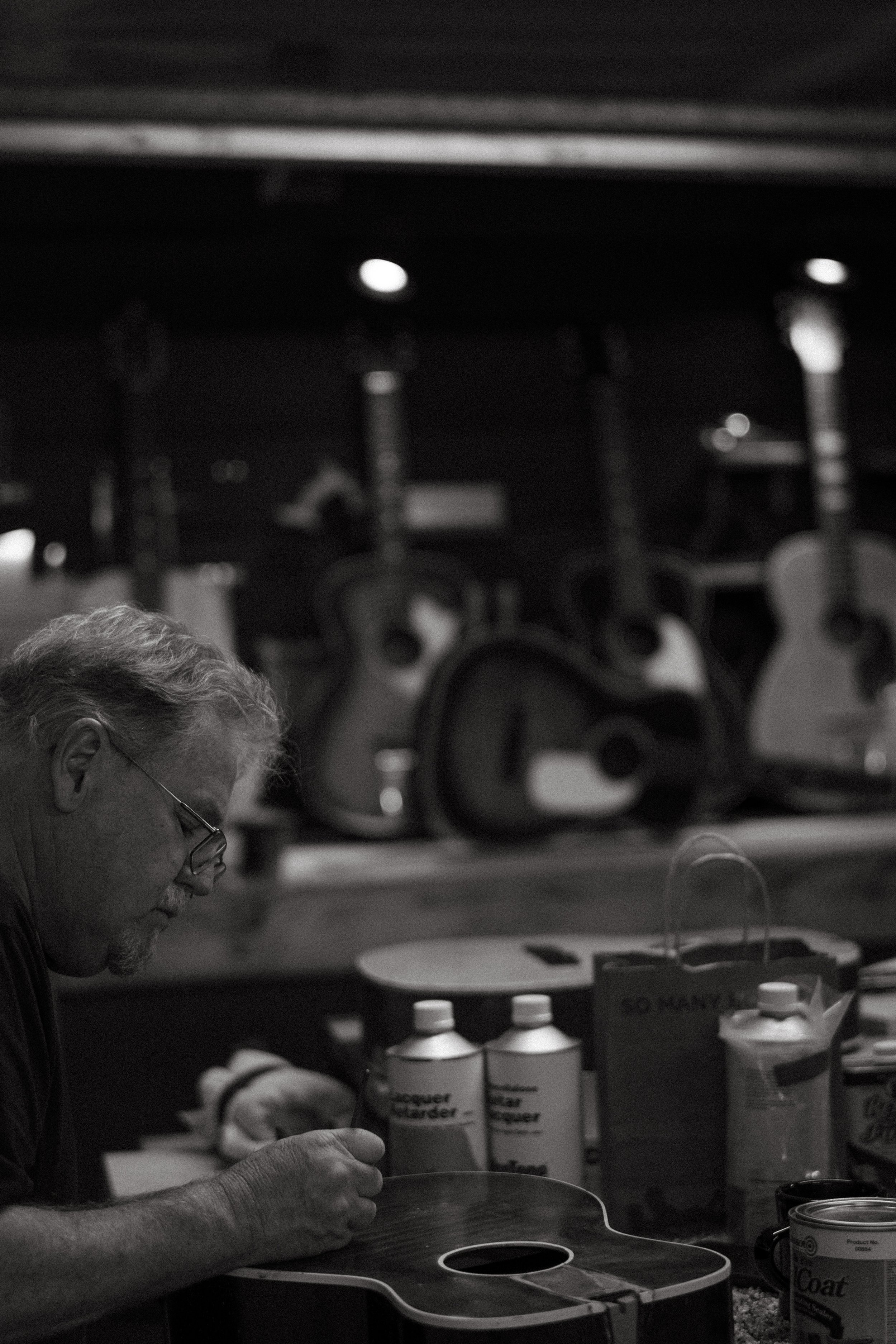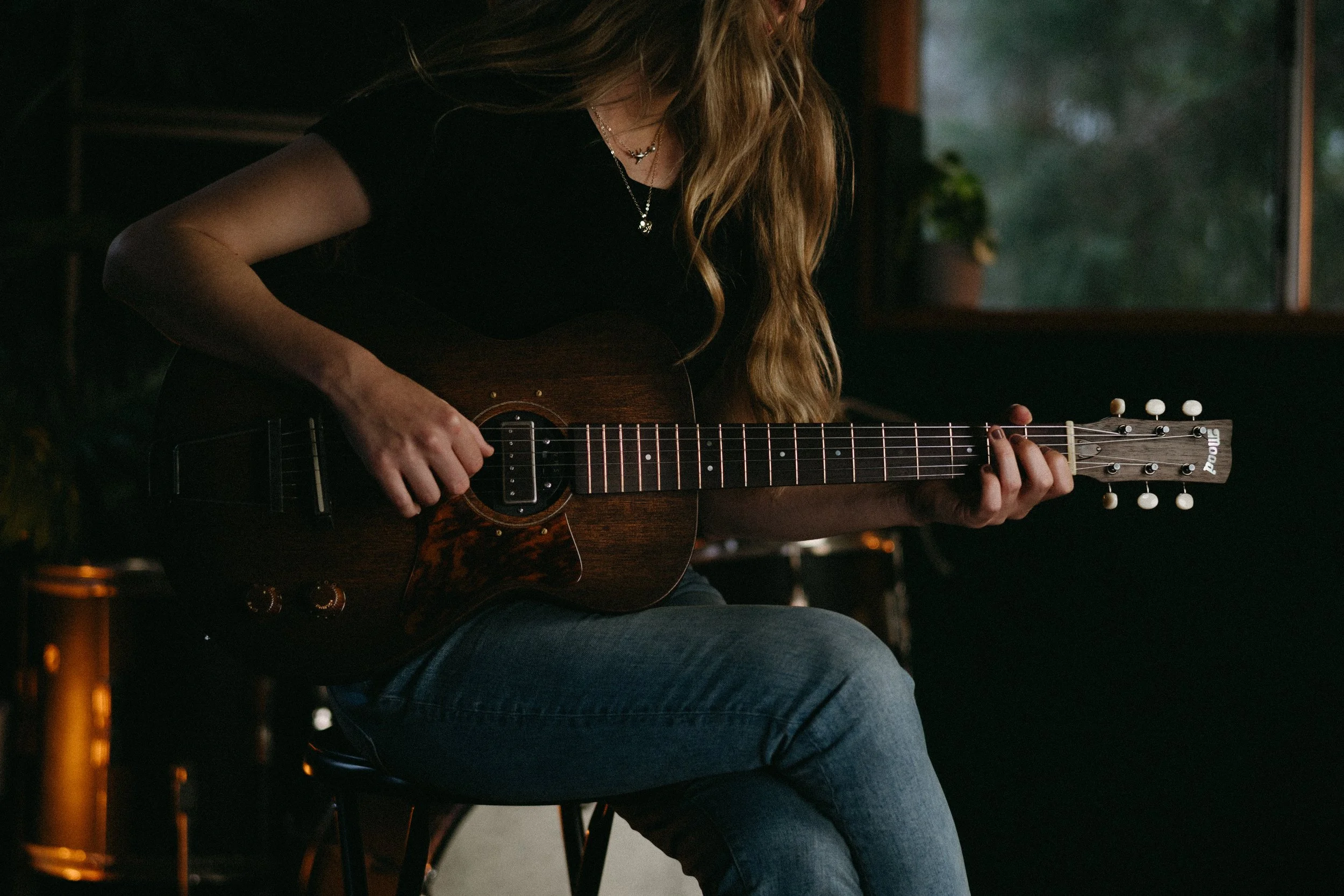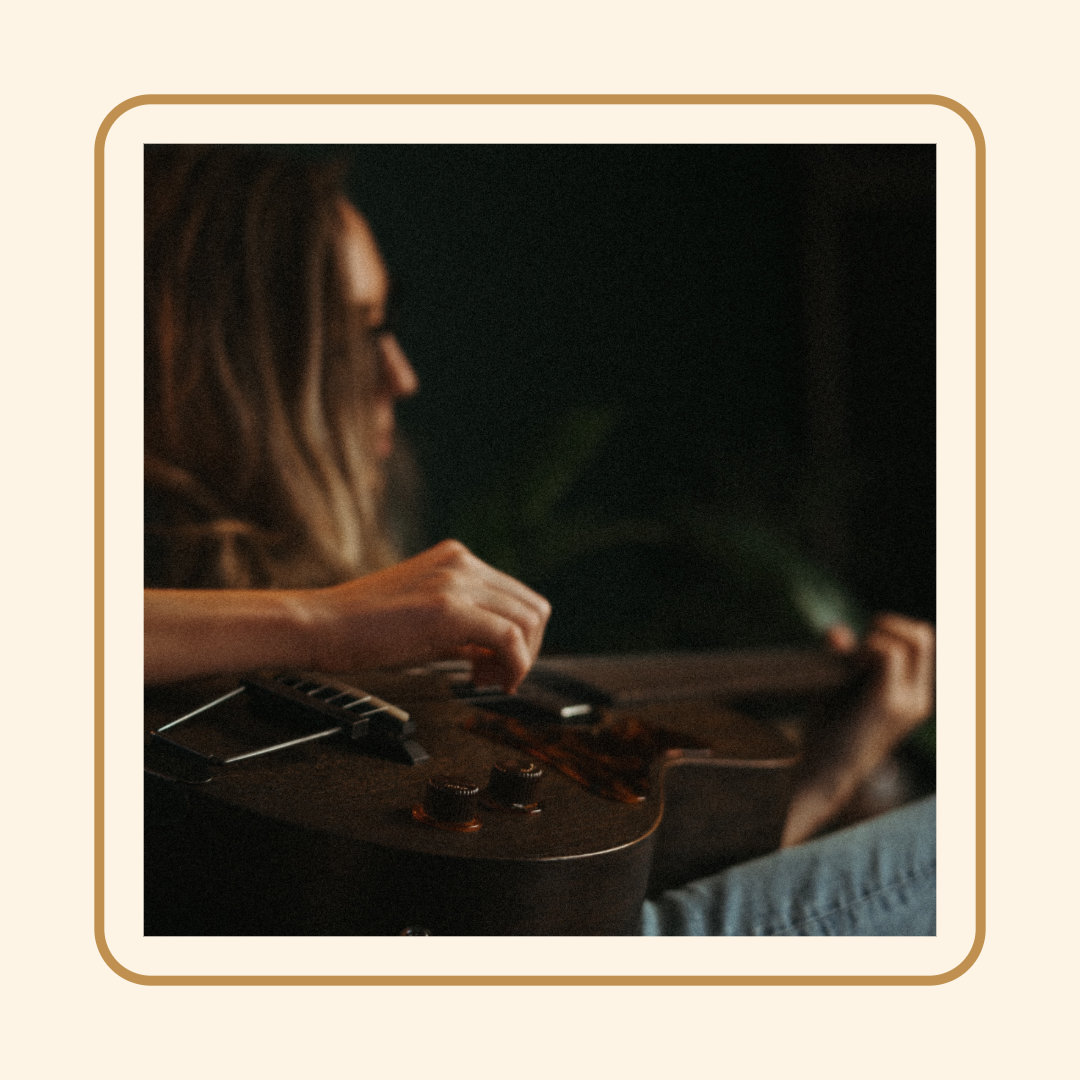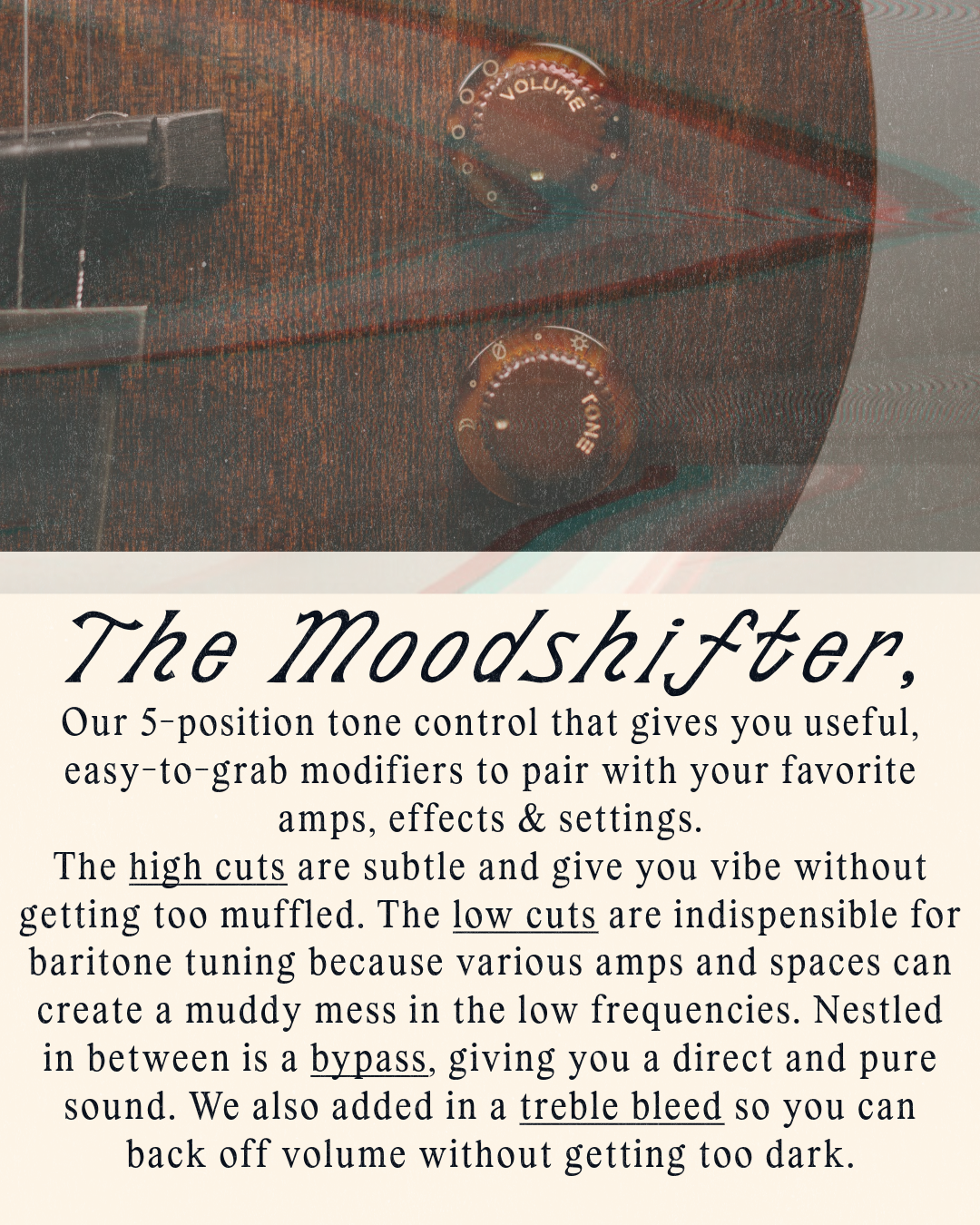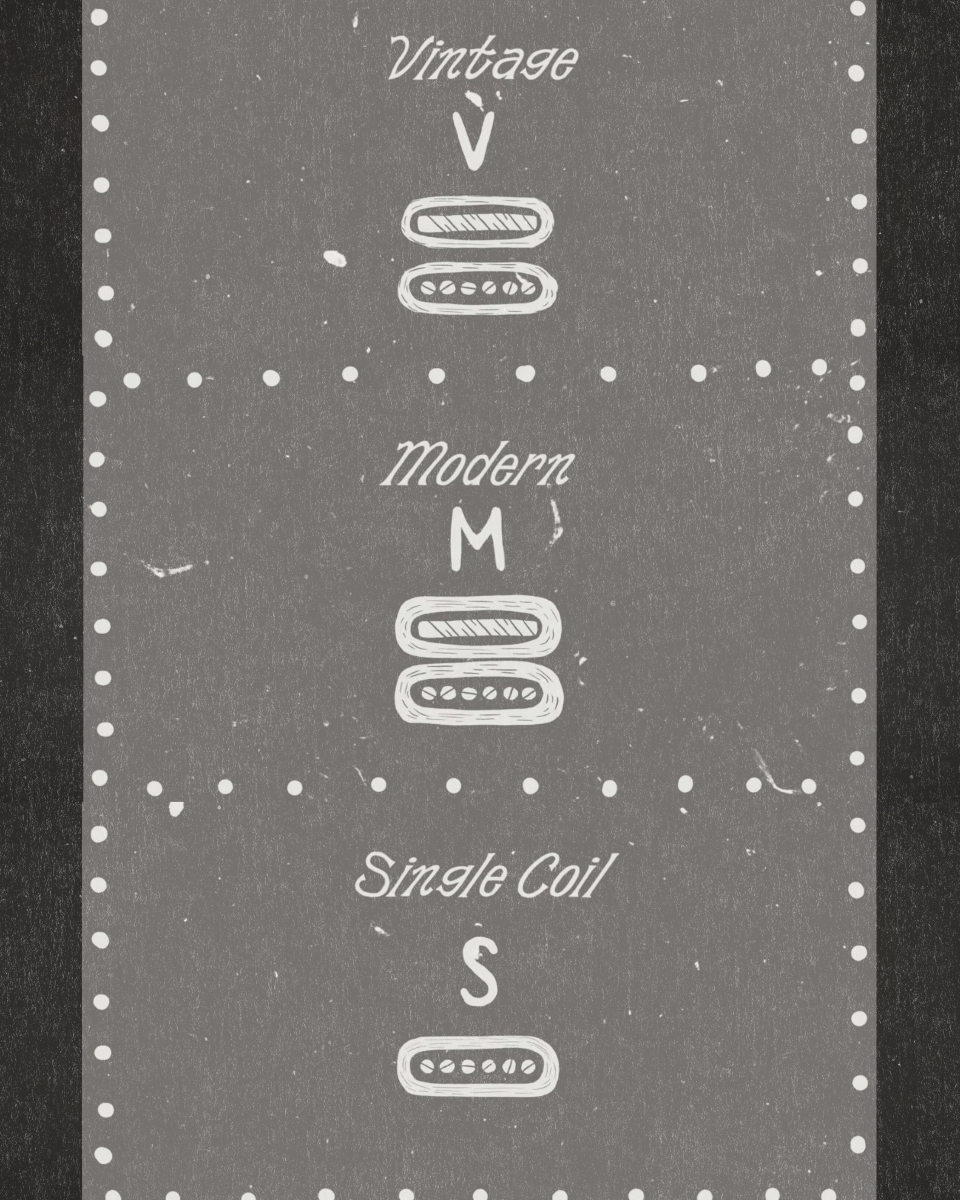and this is the Moodsender,
our first solid body electric guitar.
We are Mood Guitars. . .
baritone rubber bridge
standard rubber bridge
baritone electric (rosewood bridge)
standard electric (rosewood bridge)
baritone steel string acoustic
standard steel string acoustic
+ now includes a tune-o-matic bridge!
its a…
Inspired by the vintage charmers we have restored and converted, the Moodbender takes the beloved tone of the old rubber bridges and pushes the boundaries further to expand its moody palette. We meticulously designed every detail of this guitar so that it is lightweight and responsive, sturdy and roadworthy, unique and adaptable. It is a shapeshifting chameleon that wears many hats.
We dreamed this to be the perfect recording studio workhorse that can easily transform its timbres, tones, and tunings to fit any mood you are going for. These transformations would normally take a lengthy and invasive visit to the guitar tech, but the Moodbender can get you up and running in several minutes with a fresh sound to keep the session flowing.






The Moodwinder,
our handwound pickup that allows the player to select different windings within the pickup.
Vintage
Uses a lower winding count to achieve a clearer top end and tamed low end. We love this setting when paired with a tube amp because of its warm, rich character. It is also great to record for a lead guitar track, parts that are going to be layered, or when you don’t need the huge, thick sound of the Modern setting.
Modern
Uses the full winding count, which yields a huge low end and iconic, softer top end. This was the exclusive sound of the pickup that was included in our Vintage Deluxe models. It is perfect for solo performances because of its full bass and warm treble. We especially love this setting on the baritone tunings because of its heavy low “B”.
Single Coil
Uses only the coil with the adjustable pole pieces. This sounds even crisper than the vintage mode and has a unique sounding low end. This is a vibey setting that sounds like it has scooped mids, which you may find works just right on that track you are trying to find a distinct sound for.
The Moodshifter,
a 5-position tone control that offers many useful and easy-to-grab modifiers to pair with your settings.
Low Cuts
Not typically found on most guitar tone circuits, our low cuts are practical and effective. These are indispensable when in baritone tuning because moving between various amps and spaces can create a muddy mess in the low frequencies. Our first cut gets the sub range around 70Hz and the second cut controls the low mids around 200Hz. The cuts are also useful in standard tuning because it can help you get a more focused sound, which saves a lot of post-EQ'ing time.
High Cuts
High roll-offs are no stranger to guitar tone circuits, but we designed two functional cuts that are more subtle and don’t sacrifice a ton of volume. The first cut is very useable, as it knocks off just the very high shimmering tones that can sometimes sound harsh with certain strings, in different rooms, and with brighter settings. The second cut is all about vibe and is perfect for jazz, neo-soul, or interesting muted parts. Think Eric Clapton’s “Woman Tone”, but just a touch brighter.
Bypass
Nestled in between the high and low cuts is a bypass setting, which doesn’t ride through the tone circuit at all, giving you the direct and pure sound of the pickup and volume knob. Because sometimes, it sounds good just the way it is.
Treble Bleed
If you pop up the volume knob, it activates a capacitor and resistor across the legs of the volume pot, which retains treble and cuts a little bass when you are rolling the volume back. The knob pressed down functions as a normal volume knob, where the high end slowly diminishes as you turn down. We use the treble bleed when we heavily distort the sound through an amp or fuzz pedal to be able to back off the volume without it getting too dark.

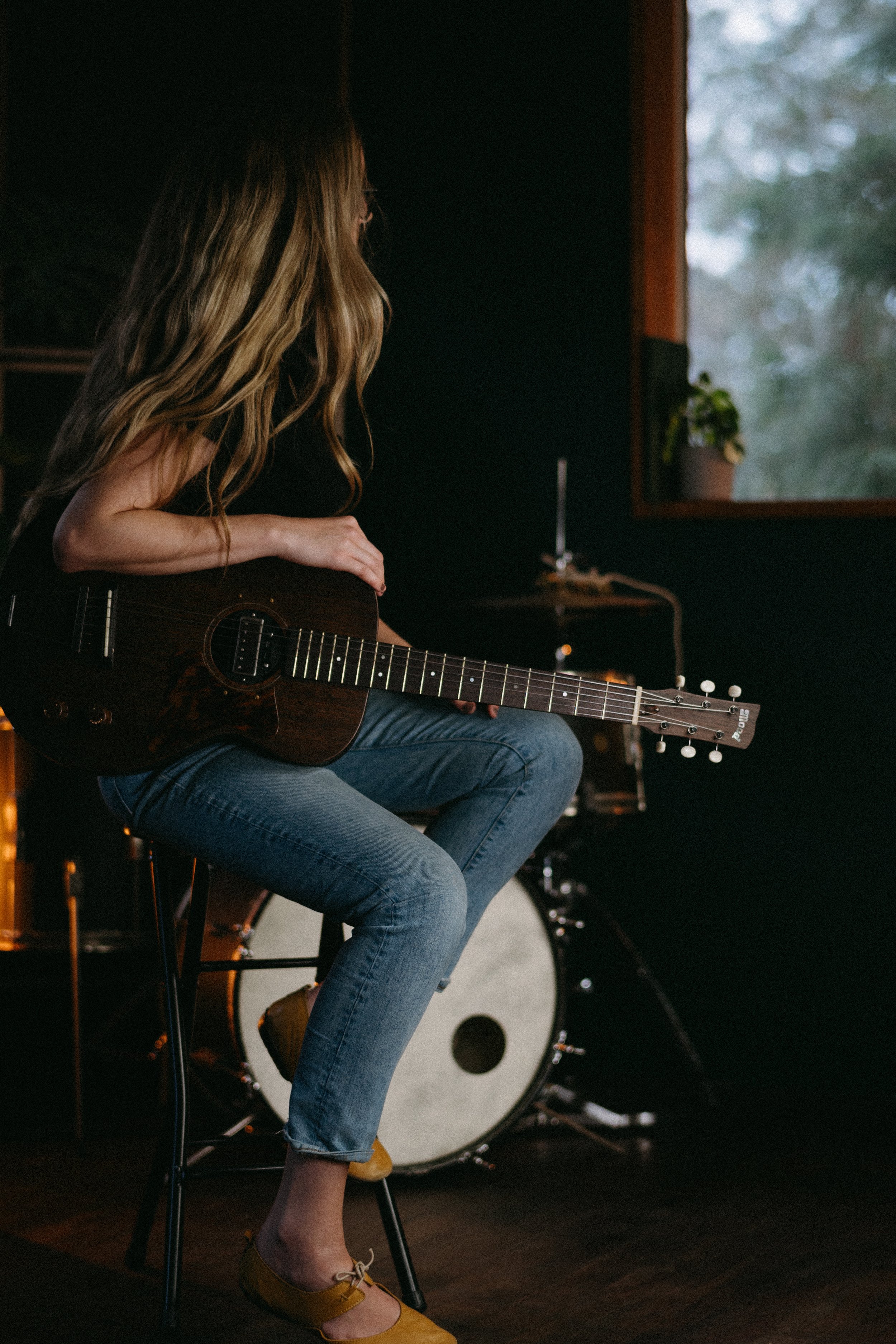

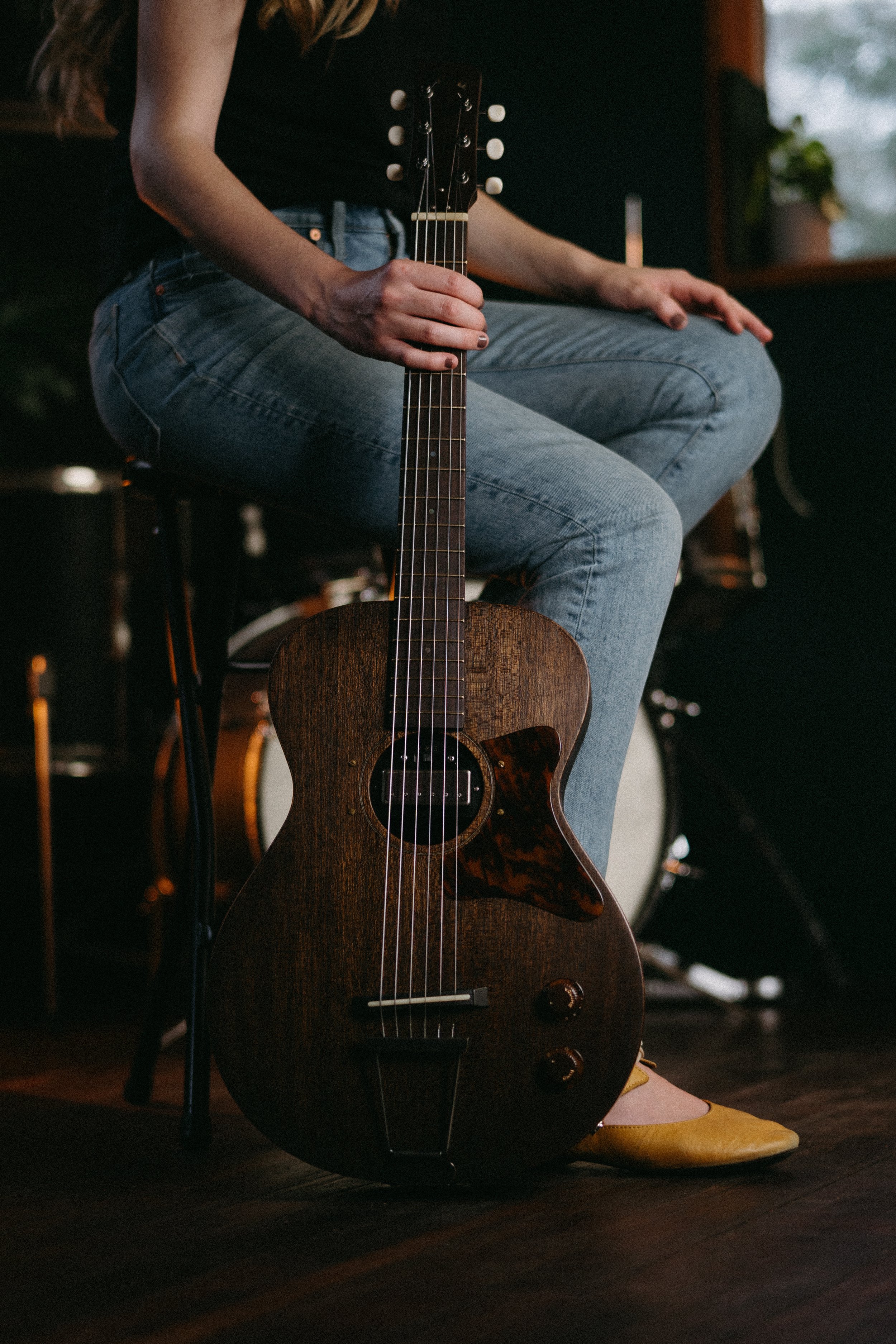
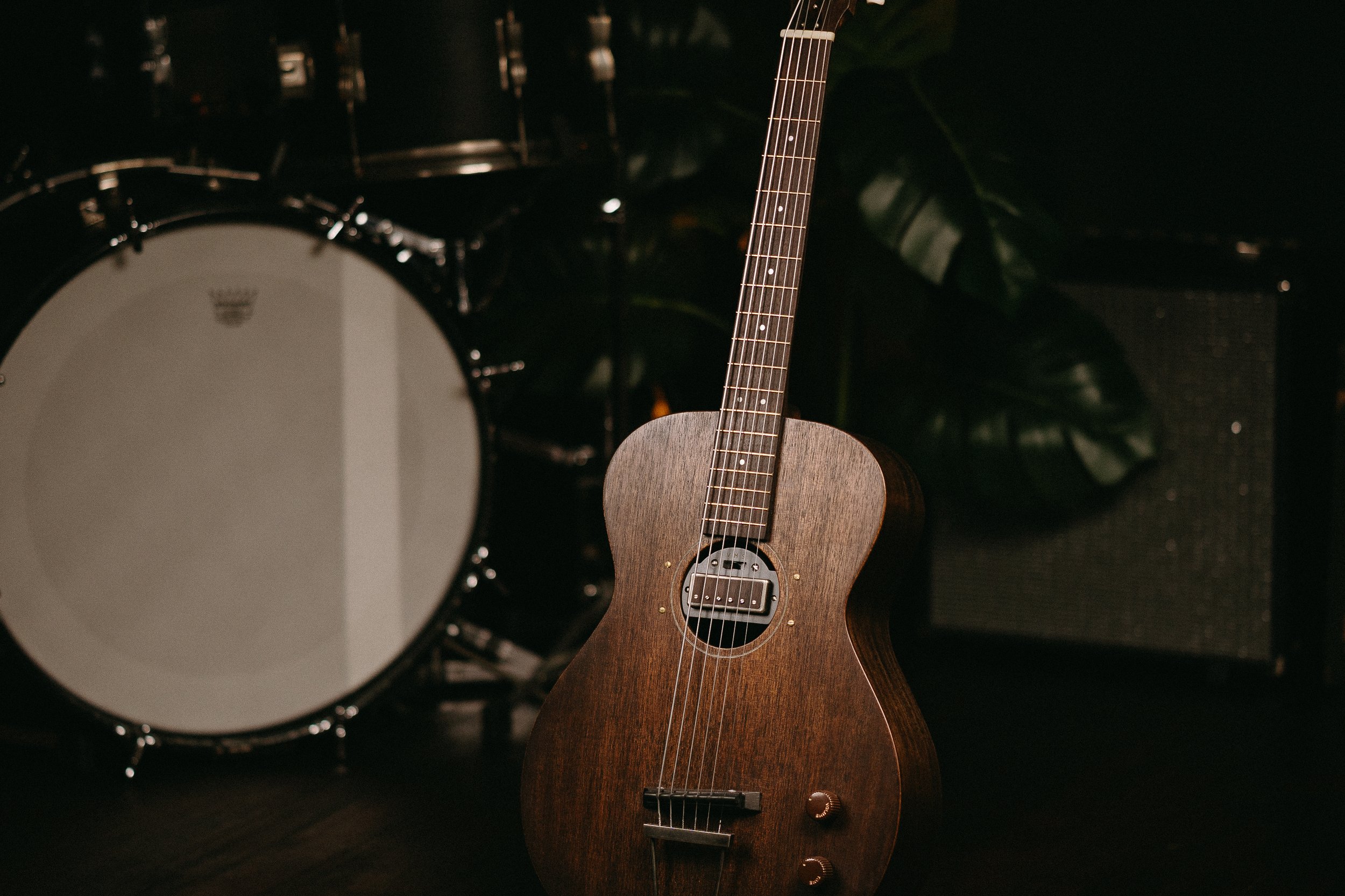


The quick-change saddles & nuts.
The Moodbender’s design is centered around its adjustable floating bridge. The different saddles allow you to switch between standard and baritone tunings and rubber, rosewood, or now including our new offering—the tune-o-matic (metal/nylon)— tops. The baritone tuning needs thicker strings, so converting a guitar would normally require an entirely new nut and saddle. However, the Moodbender is designed to easily switch between the two, made possible by its quick-change nut that doesn’t require glue and the quick-change saddle that simply snaps onto the bridge.
More than just a rubber bridge…
The Moodbender offers more than just the dark, muted, plucky sound of the rubber bridge. It also includes a set of rosewood saddles for both tunings and a tune-o-matic saddle for which tuning you prefer. The rosewood saddles give you more sustain and brightness, while still being mellower and moodier sounding than the typical bone saddle found on most guitars. In total, you get five saddles and two bone nuts to experiment and play with.
Changing them out…
Switching the Moodbender from the rubber to rosewood to tune-o-matic is an easy transition and doesn’t even require you removing the strings. Simply loosen the strings, slide out the bridge, pop off the old saddle and snap on the new one. If you want to change the Moodbender from standard to baritone (or vice versa), it requires a little more work, but don’t worry, we provide a detailed manual that includes every step of the process. It takes the same amount of time it would take you to change a set of strings to make the switch—and you have all of the strings you need in the one pack of flatwounds we send with the guitar.
The bonus steel string acoustic…
When we designed the guitar, we didn’t even realize how much we would love the sound of steel strings paired with the rosewood bridge. It reminds us of the sound of an old Martin acoustic and sounds gorgeous recorded through a ribbon mic. The baritone tuning is especially unique and mystifying. If you are a singer-songwriter, you may find this is your favorite way to play the Moodbender. Try it with your favorite set of steel strings and see if inspiration strikes.

transform
timbres,
tones & tunings
The design.
The top of the Moodbender is domed to a 15 foot radius, which is much rounder than a standard flat-top acoustic. This helps distribute the pressure of the floating bridge more like what you would find on an archtop guitar. The guitar features a fusion between X-bracing and ladder bracing.
We love the sound and feel of the small, vintage parlor guitars that we have in our collection, so we wanted to harken back to that design while also improving it. We gave it a more comfortable, modern neck profile and curved fingerboard, which gives it the ease and playability of an electric guitar.
We kept our favorite 24-inch scale length, which contributes immensely to its unique voice. Of course we had to add an adjustable truss rod to help the guitar adapt to different climates.

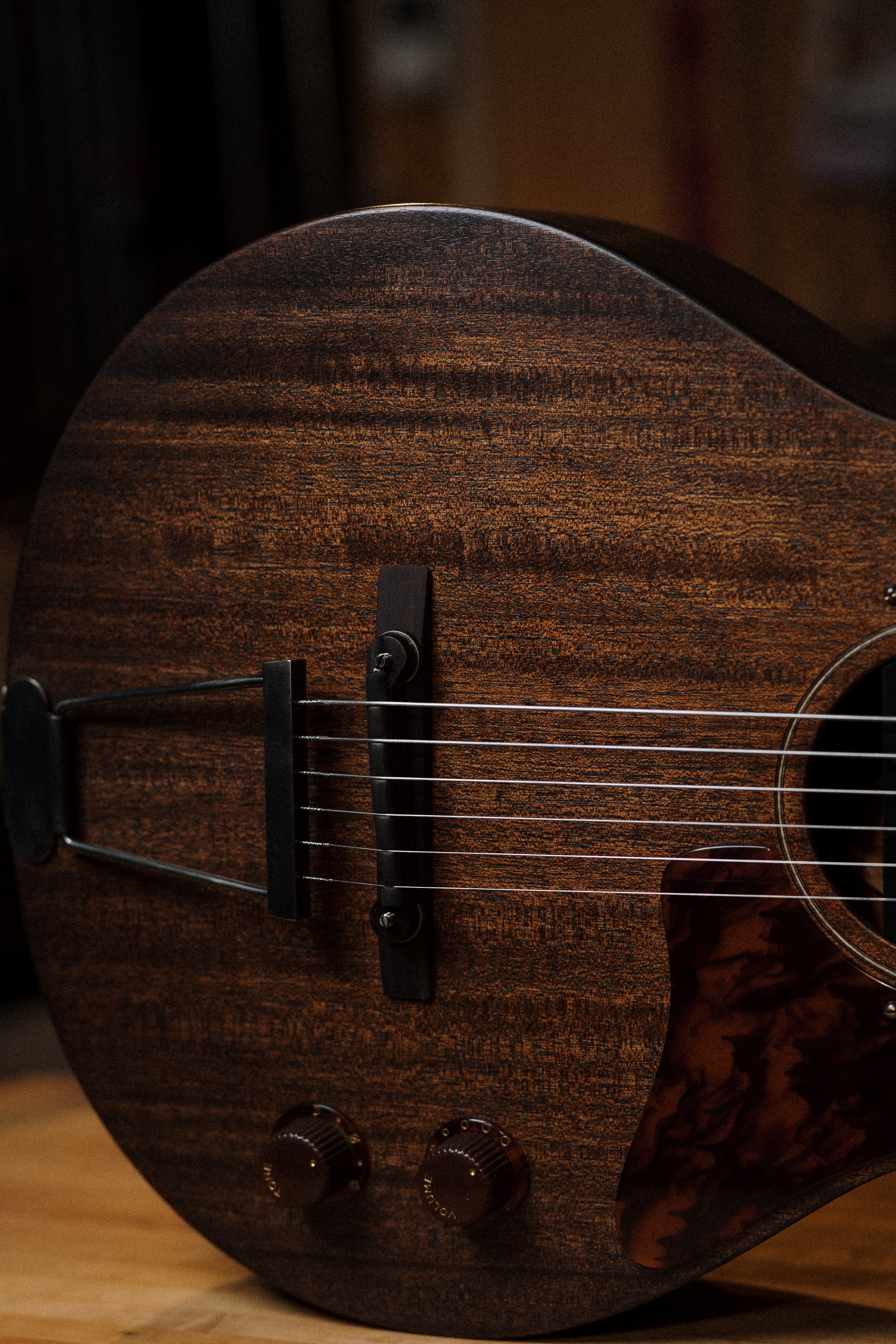







Another look,
Yet another way the Moodbender can transform. If you prefer a more minimal, streamlined vibe, you can easily remove the pickguard and mood rings on the tone knobs from the top with a couple of turns of a screwdriver. Both are removable because we don’t use any adhesives on the plastic parts. We like to change it up based on what mood we are in.
Every guitar is made to order, exactly for you. We put a ton of care and attention into every single guitar so that each is perfectly dialed in, set-up, and has just the right feel and sound. We definitely consider ourselves perfectionists. For us to hit the bull’s-eye, it takes around 150 hours from start to finish for each guitar to be built. From bending the sides and carving the braces to winding the pickups and leveling the frets, we methodically do it all in a small shop with two builders. Since we can only make a handful of guitars every year, our price reflects the time and effort put into every instrument. Because at the end of the day, we want you to have a guitar that lasts a lifetime and inspires beautiful music and moody tones years down the road.
Full Specs
24-inch scale length
1-3/4" Nut width
2-3/16" String width at saddle
10" fingerboard radius
Slightly chunky-but-comfy C neck profile
Bolt on neck with tenon and glued fingerboard extension
15-foot radius top
12-foot radius back
17.5" body length
13" wide at lower bout
8" wide at waist
Honduran Mahogany top, back and sides
Honduran Mahogany neck
Modified (spruce) X/ladder bracing
East Indian Rosewood fingerboard
East Indian Rosewood headplate
East Indian Rosewood pickup cover
East Indian Rosewood floating bridge components (1 base with 4 different saddle tops)
Acrylic tortoiseshell pickguard, "mood rings," truss rod cover
Lexan polycarbonate pickup mount
Bone "Quick-Change" nuts (standard and baritone spacings)
Black pearl inlay fretboard dots and headstock logo
“Moodwinder” hand-wound, tap-able and split-able mini-humbucker sized pickup
“Moodshifter” hand-wired, 5-way rotary tone switch
CTS push-pull volume pot with bypass-able treble bleed circuit
Switchcraft output jack and pickup switch
Harmony-style knobs
D’addario Chromes flatwound strings for standard and baritone tunings
Kluson nickel-plated tuners, hand-relic’d
Kluson nickel-plated tailpiece, hand-relic’d
Aged nickel and brass screws
Dual-action truss rod
StewMac Medium Gold Fret Wire
Hand-rubbed, dark, satin, oil and wax finish
Snug-fitting, hardshell case
Our past collection of old guitars from the 50’s and 60’s, restored and reinspired,
the Mood way.
the vintage collection


